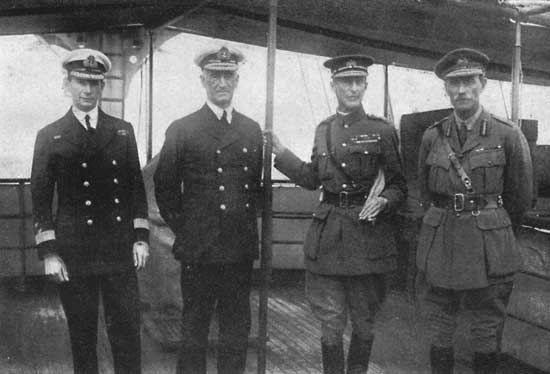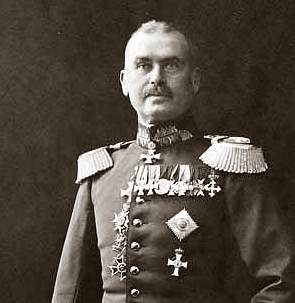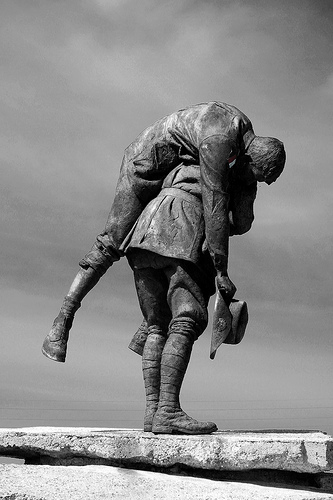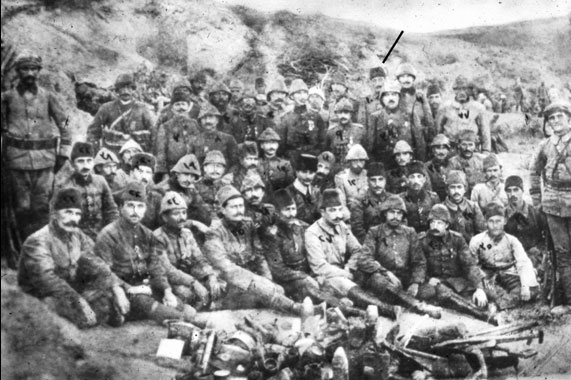Celebrating The Friendship
 •
by
•
by TuRQuaS3
Please open it first and read while playing that Çanakkale song.
http://www.youtube.com/watch?v=-eRPPenY6Mc



To mothers who lost their sons at the Gallipoli Battle.
Those heroes that shed their blood and lost their lives, you are now in the soil of a friendly country, therefore, rest in peace. There is no difference between the Johnnies and the Mehmets to us where they lie side by side in this country of ours. You, the mothers, who sent their sons from far away countries, wipe your tears; your sons are lying in our bosom and are at peace. After having lost their lives on this land they have become our sons as well."
Mustafa Kemal ATATURK, 1934

Armies & Commanders:
British Commonwealth
General Sir Ian Hamilton

Admiral Sir John de Robeck

5 divisions, building to 16


Ottoman Army
Mustafa Kemal Pasha (Everybody knows him but there is picture I want to see more picture of him 🙂
)





Lt. General Otto Liman von Sanders


6 divisions, building to 16
Battle Summary:
Following the entry of the Ottoman Empire into World War I, First Lord of the Admiralty Winston Churchill developed a plan for attacking the Dardanelles. Using the ships of the Royal Navy, Churchill believed, partially due to faulty intelligence, that the straits could be forced, opening the way for a direct assault on Constantinople. This plan was approved and several of the Royal Navy's older battleships were transferred to the Mediterranean. Operations against the Dardanelles began on February 19, 1915, with British ships under Admiral Sir Sackville Carden bombarding Turkish defenses with little effect.

A second attack was made on the 25th which succeeded in forcing the Turks to fall back to their second line of defenses. Entering the straits British warships engaged the Turks again on March 1, however their minesweepers were prevented from clearing the channel due to heavy fire. Another attempt to remove the mines failed on the 13th, leading Carden to resign. His replacement, Rear Admiral John de Robeck, launched a massive assault on Turkish defenses on the 18th. This failed and resulted in the sinking of two old British and one French battleship after they struck mines.

With the failure of the naval campaign, it became clear to Allied leaders that a ground force was going to be needed to eliminate the Turkish artillery on the Gallipoli Peninsula which commanded the straits. This mission was delegated to General Sir Ian Hamilton and the Mediterranean Expeditionary Force. This command included the newly formed Australia and New Zealand Army Corps (ANZAC), the 29th Division, the Royal Naval Division, and the French Oriental Expeditionary Corps. Security for the operation was lax and the Turks spent six weeks preparing for the anticipated assault.

Opposing the Allies was the Turkish 5th Army commanded by General Otto Liman von Sanders, the German advisor to the Ottoman army. Hamilton's plan called for landings at Cape Helles, near the tip of the peninsula, with the ANZACs landing further up the Aegean coast just north of Gaba Tepe. While the 29th Division was to advance north to take the forts along the straits, the ANZACs were to cut across the peninsula to prevent the retreat or reinforcement of the Turkish defenders. The first landings began on April 25, 1915, and were badly mismanaged.

Meeting stiff resistance at Cape Helles, British troops took heavy casualties as they landed and after heavy fighting were finally able to overwhelm the defenders. To the north, the ANZACs faired slightly better though they missed their intended landing beaches by about a mile. Pushing inland from "Anzac Cove," they were able to gain a shallow foothold. Two days later, Turkish troops under Mustafa Kemal attempted to drive the ANZACs back into the sea, but were defeated by tenacious defending and naval gunfire. At Helles, Hamilton, now supported by French troops, pushed north towards the village of Krithia.

Attacking on April 28, Hamilton's men were unable to take the village. With his advance stalled in the face of determined resistance, the front began to mirror the trench warfare of France. Another attempt was made to take Krithia on May 6. Pushing hard, Allied forces only gained a quarter mile while suffering heavy casualties. At Anzac Cove, Kemal launched a massive counterattack on May 19. Unable to throw the ANZACs back, he suffered over 10,000 casualties in the attempt. On June 4, a final attempt was made against Krithia with no success.

After a limited victory at Gully Ravine in late June, Hamilton accepted that the Helles front had become a stalemate. Seeking to move around the Turkish lines, Hamilton re-embarked two divisions and had them landed at Sulva Bay, just north of Anzac Cove, on August 6. This was supported by diversionary attacks at Anzac and Helles. Coming ashore, Lt. General Sir Frederick Stopford's men moved too slowly and the Turks were able to occupy the heights overlooking their position. As a result, the British troops were quickly locked into their beachhead. In the supporting action to the south, the ANZACs were able to win a rare victory at Lone Pine, though their main assaults on Chunuk Bair and Hill 971 failed.

On August 21, Hamilton attempted to revive the offensive at Sulva Bay with attacks on Scimitar Hill and Hill 60. Fighting in brutal heat, these were beaten off and by the 29th the battle had ended. With the failure of Hamilton's August Offensive, fighting calmed as British leaders debated the future of the campaign. In October, Hamilton was replaced by Lt. General Sir Charles Monro. After reviewing his command, and influenced by the entry of Bulgaria into the war on the side of the Central Powers, Monro recommended evacuating Gallipoli. Following a visit from Secretary of State for War Lord Kitchener, Monro's evacuation plan war approved. Beginning on December 7, troop levels were drawn down with those at Sulva Bay and Anzac Cove departing first. The last Allied forces departed Gallipoli on January 9, 1916, when the final troops embarked at Helles.
Aftermath

The Gallipoli Campaign cost the Allies 141,113 killed and wounded and the Turks 195,000. Gallipoli proved to be the Turks' greatest victory of the war. In London, the campaign's failure led to the demotion of Winston Churchill and contributed to the collapse of Prime Minister H. H. Asquith's government. The fighting at Gallipoli proved a galvanizing national experience for Australia and New Zealand, which had not previously fought in a major conflict. As a result, the anniversary of the landings, April 25, is celebrated as ANZAC Day and is both nations' most significant day of military remembrance.

"I don’t order you to fight, I order you to die. In the time it takes us to die, other troops and commanders can come and take our places."
Mustafa Kemal Ataturk
"Our life here is true hell. Fortunately, my soldiers are braver and tougher than the enemy's."
Letter to Corinne Lütfü, from the Gelibolu (20 July 1917)


















Never Forget the Friendship...
http://www.erepublik.com/en/article/1989206/1/20


Comments
gzl paylaşım
1
2 o zaman
v
o7
Eline Sağlık
v
başarılı..
v
v
o7
V
o7
v
v
v
o/
v
o7
o7
o/
ellerine sağlık
baa this is real life, UK is tiranic around the World, you know, ingame it is a good friend
HAIL ONE
tam ben yazıcaktım üstteki yoruma yazmışlar
ellerine sağlık +1
V65 + S829
Emeğine Sağlık.
lıisdoggor Thats not normal real life battle. After war created a friendship between two country and Founder of Turkey Republik Mustafa Kemal ATATÜRK. Write letter to who lost their life in battle of Gallipoli and every year their family came to memorial for pray their grand fathers who lying side by side with our grand fathers.
içim titredi
o7
o/
o7
o7
o7
o7
o7
Oylandı
v86 s832
sub back plz?
http://www.erepublik.com/en/newspaper/the-golden-bull-260605/1
WTF its going here
o7
v+s
Lol, we kicked as*es in WWI and Germany lost the whole war.. sad but true : /
http://www.ntvtarih.com.tr/canakkale/
o7
o/
v
o7
simo lliev +1
о7
o7
garip insanlarsınız mk
o7
v
Sonuna kadar oylandı. insan içindeyim. okumak, fotoğraflara bakmak istemedim.